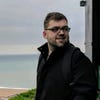Understanding Natural Language Processing
Learn the ins and outs of natural language processing, how it works, its many use cases as well as potential drawbacks

What is Natural Language Processing?
Natural Language Processing is a branch of artificial intelligence focusing on human interaction with computers. Natural Language Processing aims to enable computers to read, understand, interpret, derive meaning and manipulate human language, as well as generate human language in a meaningful and contextually relevant way.
Natural Language Processing draws on multiple disciplines, including computer science, data science and linguistics. It works by combining linguistic rules, statistical models and machine learning algorithms.
While not a new science, the technology surrounding the evolution of Natural Language Processing is advancing rapidly, thanks to increased interest in human-to-machine communications, the availability of big data and enhanced algorithms.
Natural Language Processing is about giving machines the ability to 'speak.' Having machines talk and respond in a human-like manner is already a reality. The questions you type into your search bar, the sorting of emails into your junk mail, your smart assistant and autocorrect on your phone are all powered by Natural Language Processing. While humans communicate with words, computers operate in the language of numbers, enabling them to perform data-intensive tasks at lightning speed.
How does Natural Language Processing work?
Natural Language Processing applies multiple techniques for interpreting human language, deriving meaning and performing tasks. By transforming text into vectors (text vectorization) of numbers, machines are fed training data and expected outputs (tags) to create a machine learning algorithm. The algorithm then associates particular inputs with corresponding outputs. Statistical analysis methods then help build the computer's knowledge bank and discern which features best represent the texts before making predictions on unseen data.
Ultimately, the more data the algorithm receives, the more accurate is the text analysis model. Eventually, the machine learning models become so sophisticated that the computers learn independently and without inputting manual rules.
Natural Language Processing involves several aspects:
Text Preprocessing
Tokenization: An essential task in Natural Language Processing, tokenization is used to break a string of words into semantic units, known as tokens. Sentence tokenization splits words in a text generally identified by stops. Word tokenization separates words within a sentence by identifying blank spaces. For more complex structures, like-words that often go together form collocations.
Lowercasing: Words are converted into lowercase for consistency.
Removing stopwords: High-frequency stop words with no semantic value to a sentence (which, to, at, for, is) need to be filtered out to decrease the size of the dataset and the time it takes to train a model. By removing stopwords, fewer and only meaningful tokens remain, resulting in improved task performance and increased classification accuracy.
Part of Speech Tagging
Words are assigned grammatical categories (e.g., noun, verb, adjective, etc.).
Named Entity Recognition
The process of extracting entities from within a text, such as names, places, organizations, email addresses and more. This automatically classifies the entity and organizes it into predefined categories, proving most useful when sorting unstructured data and detecting important information — crucial for large datasets.
Parsing and Syntax Analysis
The analysis of sentence structure to understand the relationships between words.
Semantic Analysis
Semantic analysis extracts meaning from sentence structure, word interactions and related concepts. The machine comprehends data under various logical clusters instead of preset categories, like positive or negative/conflict or neutral.
Sentiment Analysis
Sentiment analysis, or opinion mining, classifies text by categorizing opinions into positive, negative or neutral, and helps businesses determine and monitor brand and product perception through customer feedback, social media monitoring, market research and customer service.
Machine Translation
The ability to translate text from one language to another.
Speech Recognition
The ability to convert speech to text.
Question Answering
Understanding and responding to questions in natural language.
Text Generation
The ability to create coherent text within a relevant context.
Part-Of-Speech Tagging
Part-Of-Speech (POS) tagging, or grammatical tagging, applies labels to each token (word) in a text corpus to indicate the part of speech and other grammatical categories such as tense, number and case, for example, and identifies the relationship between words to understand the meaning of a sentence.
Dependency Parsing
Dependency Parsing is the process of analyzing the grammatical structure of a sentence to find headwords, dependent words and how they relate to each other. Various tags represent the connection between two words in a sentence, known as dependency tags.
Constituency Parsing
The process of analyzing sentences by breaking them down into sub-phrases, also known as constituents. Such sub-phrases belong to a specific category of grammar: noun phrases and verb phrases.
Lemmatization and Stemming
Humans often use an inflected form of a word or different grammatical structures to speak. Natural Language Processing uses stemming algorithms to remove prefixes and suffixes to return the word to its root, often leading to incorrect meanings and spellings. Lemmatization considers the context and converts the word to its meaningful base form, called Lemma. Sometimes, the same word can have multiple different Lemmas, so the Part Of Speech tag should identify the word in that specific context.
Stopword Removal
Crucial to the Natural Language Processing process, high-frequency stop words with no semantic value to a sentence (which, to, at, for, is) need to be filtered out to decrease the size of the dataset and the time it takes to train a model. By removing stopwords, fewer and only meaningful tokens remain, resulting in improved task performance and increased classification accuracy.
Word Sense Disambiguation
Depending on their context, the same word can have different meanings. This often appears subconsciously in humans; computers use two main techniques to determine which sense of a word is meant in the sentence, using either a knowledge-based approach that infers meaning by observing the dictionary definition or a supervised method that uses Natural Language Processing algorithms to apply word sense disambiguation.
Named Entity Recognition
Named Entity Recognition is the process of extracting entities from within a text, such as names, places, organizations, email addresses and more. This Natural Language Processing technique automatically classifies the entity and organizes it into predefined categories, proving most useful when sorting unstructured data and detecting important information - crucial for large datasets.
Text Classification
The process of automatically analyzing and structuring text to understand the meaning of unstructured data. Results then get organized into predefined categories (tags), used mainly by businesses to automate processes and discover insights that lead to better decision-making. Sentiment analysis is a form of text classification.
Use cases for Natural Language Processing

The Natural Language Processing market is estimated to reach $43 billion by 2025 — an increase of $38 billion (up 88%) from 2018. Natural Language Processing has a wide range of use cases across a number of industries:
Translation
More complex than a simple word-to-word replacement method, language translation, as seen by Google Translate, deconstructs sentences and then reconstructs them in another language to create meaning. Through the power of the Natural Language Processing task, word sense disambiguation and by following the pre-programmed algorithm that utilizes the pre-built knowledge bank, complex and ambiguous translations occur instantaneously from any language.
Computers do not understand context, so they need a process in which sentences get deconstructed, then reconstructed in another language to add meaning. Word sense disambiguation is then deployed to solve the issue of complexity and ambiguity and follows the pre-programmed algorithm that utilizes the pre-built knowledge bank.
Conversational AI
Automatic conversation between computers and humans is at the heart of chatbots and virtual assistants such as Apple’s Siri or Amazon’s Alexa. Conversational AI applications rely heavily on Natural Language Processing and intent recognition to understand user queries and provide relevant responses.
Dictation and Transcription
Used often in health care, businesses and journalism, physicians, professionals and journalists dictate into a voice recorder for transcription into text through the power of Natural Language Processing. Such tools help to remove arduous, time-consuming, repetitive and inefficient tasks and free up space for more meaningful and productive human tasks. Dictation software is available on your iPhone’s keyboard, and software like Otter.ai provides transcription.
Financial Credit Scoring
Performed originally by lenders, banks and other financial institutions to extract data from large unstructured documents such as loan documents and income statements, financial credit scoring now utilizes Natural Language Processing software to perform these tasks automatically. Natural Language Processing-driven statistical analysis also determines the creditworthiness of an individual or business much faster, more accurately and more in-depth than humans.
Spam Detection
Natural Language Processing models that use text classification can detect spam-related words, sentences and sentiments in emails, text messages and social media messaging apps by removing filling and stopwords. Data cleaning and preprocessing can then occur, ready for tokenization and then PoS tagging.
Limitations of Natural Language Processing

Although Natural Language Processing is a powerful tool with many benefits, there are still several limitations yet to be addressed. However, despite the limitations of Natural Language Processing, researchers and developers continue to strive to overcome challenges and improve the robustness and applicability of Natural Language Processing. Current limitations include the following:
Irony and Sarcasm
Proving difficult for machines is deciphering as irony and sarcasm words that are, by definition, positive or negative, yet imply the opposite. Even though models are programmed to recognize cues and phrases such as 'yeah, right' or 'whatever,' humor and its context cannot always be taught in a linear process (like humans learning a new language).
Errors
Misspelt or misused words can create problems for text analysis. While autocorrect and grammar correction can handle common mistakes, they do not always understand the writer’s intention. The same raises havoc in the spoken word with mispronunciations, different accents and stutters. However, as databases grow and smart assistants are trained by individual users, these issues can be substantially minimized.
Colloquialisms and Slang
Idioms, informal phrases, cultural-specific lingo and expressions can cause several problems for Natural Language Processing - especially those built for wide use. Colloquialisms may not have a dictionary definition, and sometimes expression meanings can differ depending on the geographic location. Cultural language, including slang, morphs constantly with new words evolving daily - so it is difficult for machines to stay up-to-date.
The future of Natural Language Processing
Bearing in mind that the field of Natural Language Processing is rapidly evolving, there are a few future trends and predictions that should be considered:
Advanced Pre-trained Models
Development of large pre-trained models, such as GPT-4 and BERT, will continue.
Multi-modal Natural Language Processing
The integration of text with other formats, such as images, videos and audio, to develop more complex and thorough Natural Language Processing models.
Explainability and Interpretability
Further work towards enhancing interpretability of Natural Language Processing models and addressing the 'black box' decision-making process. This will be of note in information-sensitive areas, such as health care, finance, and law.
Zero-Shot Learning
Refining the ability of Natural Language Processing models to perform tasks with no task-specific training.
Conversational AI Improvements
Improvements to AI’s conversational ability. This includes helping chatbots to be more natural, context-aware and allowing them to approach and handle complex interactions.
Conclusion
Natural Language Processing has the power to surface deep insights and empowers workers to work smarter, more efficiently and intuitively. It can reshape industries, augmenting people's professional and personal lives by raising productivity in less time. The rate of advancement of this technology is exponential, with many more breakthroughs to come.
About the Author(s)
You May Also Like


.jpg?width=700&auto=webp&quality=80&disable=upscale)
.jpg?width=700&auto=webp&quality=80&disable=upscale)
.jpg?width=700&auto=webp&quality=80&disable=upscale)
.jpg?width=300&auto=webp&quality=80&disable=upscale)
.jpg?width=300&auto=webp&quality=80&disable=upscale)
.jpg?width=300&auto=webp&quality=80&disable=upscale)
.jpg?width=300&auto=webp&quality=80&disable=upscale)
.jpg?width=300&auto=webp&quality=80&disable=upscale)